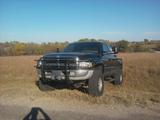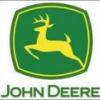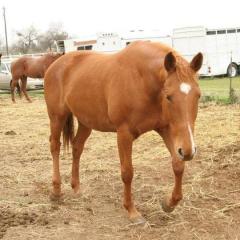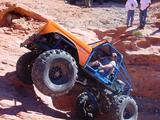Search the Community
Showing results for tags 'p1693'.
-
For 2000-2002 Year Trucks (For Owners Without Code Readers) Insert your ignition key. Turn it to the OFF position. Now turn it ON, OFF, ON, OFF, ON in less than 5 seconds. Leave it in the on position. In the odometer display it should start to display codes. It starts with P PCU errors. This is to notify you that the error codes are coming. They would show up as Pnnnn. All error codes are listed in 4 digits. Write down all Pnnnn error codes that are displayed. P Done will notify that P PCU error code list is done. Now we display P ECU errors. This is to notify you that the error codes are coming. They would show up as Pnnnn. All error codes are listed in 4 digits. Write down all Pnnnn error codes that are displayed. This is notify that P ECU error code list is done. Now turn your key off. Here is a demonstration of it. http-~~-//www.youtube.com/watch?v=7XQJmaIF9Do Now take notice to the error codes displayed. Powertrain Control Module (P PCU)Engine Control Module (P ECU)P0500 - Speed Sensor Error P1693 - Companion CodeP0236 - Boost Too High Too Long P1693 - Companion Code Now notice the P1693 popped twice. There is a reason for it. Like if you have an error in the ECM then the P1963 will be displayed in the PCM. If there is a error in the PCM then the P1693 will be displayed in the ECM. Now in my case I had errors on both side so the P1693 was displayed on both modules to alert you that there is errors in both. Always make sure you see P Done Twice! It really common to see on the forums where some says "Oh my I got a P1693 and that's it" It's impossible to have just a P1693 error code by itself. So more that likely the owner saw the P Done and shut the key off and didn't allow for the ECM to display its errors. Also read my thread over at CumminsForum.Com concerning this issue... http://www.cumminsforum.com/forum/98-5-02-powertrain/139687-p1693-codes-solo.html For 1998-2002 Year Trucks (For All Code Readers) The PCM and ECM monitor many different circuits in the powertrain system. If the ECM or PCM senses a problem with a monitored circuit often enough to indicate an actual problem, it stores a Diagnostic Trouble Code (DTC) in the ECM’s or PCM’s memory. With certain DTC’s, if the problem is repaired or ceases to exist, the ECM or PCM cancels the code after 40 warm-up cycles. Certain other DTC’s may be cancelled after 1 or 2 good “trips”. Refer to Trip Definition. DTC’s that affect vehicle emissions illuminate the Malfunction Indicator Lamp (MIL). The MIL is displayed as an engine icon (graphic) on the instrument panel. Refer to Malfunction Indicator Lamp. Certain DTC’s will set a “P1693 companion DTC” in the opposite control module. This means that after repair, the DTC must be erased from both modules. Certain criteria must be met before the ECM or PCM will store a DTC in memory. The criteria may be a specific range of engine RPM, throttle opening, engine temperature or input voltage. The ECM or PCM might not store a DTC for a monitored circuit even though a malfunction has occurred. This may happen because one of the DTC criteria for the circuit has not been met. For example, assume the DTC criteria requires the ECM to monitor the circuit only when the engine operates between 750 and 2000 RPM. Suppose the sensor’s output circuit shorts to ground when engine operates above 2400 RPM (resulting in 0 volt input to the ECM). Because the condition happens at an engine speed above the maximum threshold (2000 rpm, the ECM will not store a DTC. There are several operating conditions for which the ECM and PCM monitors and sets DTC’s. Refer to Monitored Systems, Components, and Non-Monitored Circuits. Technicians must retrieve stored DTC’s by connecting the DRB scan tool (or an equivalent scan tool) to the 16–way data link connector (Fig. 3). Refer to the Diagnostic Trouble Code chart (list). Remember that DTC’s are the results of a system or circuit failure, but do not directly identify the failed component or components. Various diagnostic procedures may actually cause a diagnostic monitor to set a DTC. For instance, disconnecting a relay or removing an electrical connector while the engine is running. When a repair is completed and verified, connect the DRB scan tool to the 16–way data link connector to erase all ECM and PCM DTC’s and extinguish the MIL. Diagnostic Trouble Code Listing Diagnostic Trouble Code chart (PDF File) Self Erasing Of Error Codes Trip Indicator The Trip is essential for running monitors and extinguishing the MIL. In OBD II terms, a trip is a set of vehicle operating conditions that must be met for a specific monitor to run. All trips begin with a key cycle. Good Trip The Good Trip counters are as follows: ● Specific Good Trip ● Fuel System Good Trip ● Misfire Good Trip ● Alternate Good Trip (appears as a Global Good Trip on DRB III) ● Comprehensive Components ● Major Monitor ● Warm-Up Cycles Specific Good Trip The term Good Trip has different meanings depending on the circumstances: ●If the MIL is OFF, a trip is defined as when the Oxygen Sensor Monitor and the Catalyst Monitor have been completed in the same drive cycle. ● If the MIL is ON and a DTC was set by the Fuel Monitor or Misfire Monitor (both continuous monitors), the vehicle must be operated in the Similar Condition Window for a specified amount of time. ● If the MIL is ON and a DTC was set by a Task Manager commanded once-per-trip monitor (such asthe Oxygen Sensor Monitor, Catalyst Monitor, Purge Flow Monitor, Leak Detection Pump Monitor, EGR Monitor or Oxygen Sensor Heater Monitor), a good trip is when the monitor is passed on the next startup. ● If the MIL is ON and any other emissions DTC was set (not an OBD II monitor), a good trip occurs when the Oxygen Sensor Monitor and Catalyst Monitor have been completed, or two minutes of engine run time if the Oxygen Sensor Monitor and Catalyst Monitor have been stopped from running. Fuel System Good Trip To count a good trip (three required) and turn off the MIL, the following conditions must occur: ● Engine in closed loop ● Operating in Similar Conditions Window ● Short Term multiplied by Long Term less than threshold ● Less than threshold for a predetermined time If all of the previous criteria are met, the PCM will count a good trip (three required) and turn off the MIL. Misfire Good Trip If the following conditions are met the PCM will count one good trip (three required) in order to turn off the MIL: ● Operating in Similar Condition Window ● 1000 engine revolutions with no misfire Warm-Up Cycles Once the MIL has been extinguished by the Good Trip Counter, the PCM automatically switches to a Warm-Up Cycle Counter that can be viewed on the DRB III. Warm-Up Cycles are used to erase DTCs and Freeze Frames. Forty Warm-Up cycles must occur in order for the PCM to self-erase a DTC and Freeze Frame. A Warm-Up Cycle is defined as follows: ● Engine coolant temperature must start below and rise above 160° F ● Engine coolant temperature must rise by 40° F ● No further faults occur
-
- code reader
- error code
-
(and 3 more)
Tagged with:
-
Hey,I did the key trick yesterday and the P 1693 codes comes up, but nothing else???? It goes ------;P 1693;------;milage. That's it. I've done this several times and that is all I get... I've even taken it to AutoZone and ran the code scanner and no codes!!!! Any ideas????? :confused: Thanks,Winslow
-
When you guys talk about checking codes how are you doing this? I tried doing a search but didn't get desirable results. :confused2:
- 13 replies
-
- code reader
- error code
-
(and 3 more)
Tagged with:
-
Hi new to site and I have a question about the code that came up on my truck it is a 2002. 2500 , 24 valve 5.9 and the code is 1693 what does that mean? I have no idea myself .Thanks for any heip you can give me
- 14 replies
-
p1693, p0500 SPEED SENSORSpeedo works fine.. No idea WTF I'm getting these for..
-
Ok, So I bought a 2000 dodge 2500 4x4 auto, quadcab. When I bought it is seemed to run and shift fine. I got a pretty good deal on it and was a little worried something might be wrong. Well of course I didn't know about key trick to check for codes until I started working on it at home. When I bought it there was only 1 battery, so I bought two new batteries and installed. I also bought a raptor 100 and installed along w/ fuel filter. I did both of these at the same time. Since then I am getting 3 codes. p1693, p0216, and P0123. I know the first two point to mechanical ip failure, but it still cranks and runs good. The main problem I have now is the p0123 code and my truck will not shift into overdrive or 4th. I have installed a timbo apps. that was no help. Also had tranny fluid and filter changed. All the problems seem to have started after new fuel pump and batteries installed, but that just doesn't make sense. Gonna follow mikes 14 step procedure for checking grounds and wires. pretty aggravated at the moment.
- 12 replies
-
- apps sensor
- p0123
-
(and 3 more)
Tagged with:
-
Well, I was going to take my truck in today to have the codes read because I had the p1693 companion code. To review, I started another thread about my truck choking out on the highway, where I could power through it or back off and it would go away. Then my batteries died and after installing the new ones the truck seemed to run great! Now to my new issue... Towed my rock truck to an event this weekend and the truck only "choked" a little on the way up. Coming back I had to drag my buddies trailer back. 40 foot gooseneck with two buggies on it. I'm guessing 16,000 pounds. Truck was running great, went to lay into the throttle going up a hill and holy cow I thought my truck was going to shake itself in half and break apart. Same symptons as before, I could power through it or lay off the throttle and it would go away. This happened in OD and out of OD. So I took it easy the rest of the way home because everytime I would get into the throttle this shaking, choking, thing would happen. Well, made it back to town and after unhooking decided to do the key trick. I got a pdone no more p1693. ( maybe my new batteries had something to do with this.) I fired up the truck and then stomped the pedal, in park, to hear my exhaust bounce of my buddies concrete wall. about 1500 RPMS it went pah, pah, choke, stutter, vroom. Sorry no other way to explain it. Did it a couple of more times and the same thing happened. I also noticed when this happened I would get a puff of black smoke followed by white smoke. If I steadily pressed the accelerator pedal it wouldn't miss a beat and rev all the way to 3K with no issues. But, as soon as I stomped it hard it would choke and do all the other stuff as it was in the 1500rpm range. I started the truck this morning and tried to repeat the problem and coudn't get it to repeat the problem. Got to work and tried it after the truck warmed up and the symptoms were there again, stomp the pedal, choking, cough, pah pah, vrroom, black smoke then white smoke and still showing a pdone code. Help!!!! Sorry for the long post but don't know how else to describe it. So what do you think is happening or worst yet happened?
- 10 replies
-
- error codes
- p1693
-
(and 1 more)
Tagged with:
-
I'm going to point out to everyone there is NO WAY to have just a P1693 code present during error code dumping. Yes the P1693 is a companion code and has no really meaning but... "This code indicates there is more code present in the other computer" So if the P1693 is in the P PCU that means there is more codes present in the P ECU. So if there is a P1693 in the P ECU that means there is more codes present in the P PCU. Then even in rare cases seeing the P1693 code in both computers pointing out that both computers have codes. But there is NO WAY for the P1693 to be the only codes present during error code dump. It's totally impossible! The reason I'm posting this is because it seem like everyone is cancelling out at the first P DONE thinking its done. WRONG! There is TWO computers in the truck. P PCU = Powertrain Controller Unit (Passenger side firewall) P ECU = Engine Controller Unit (Driver side of engine block) You should always see both P PCU and P ECU displayed and 2 P DONE's in the display. If you want to see a video of this and how to properly do it please reffer to my web site and watch the video I produced so you can give us acurrate information on your problems your having with your truck. Here is the page with the video of how its done... http://mopar.mopar1973man.com/cummins/2ndgen24v/obd2-error-codes/obd2-error-codes.htm Now the other thing is alot of people are getting error code from OBD II sites or from manuals with the scanners. I'll point out that any code over P1000 is a manufacture specific code that only applies to the that make and model of vehicle so please refer to a proper Factory service manual and get the proper codes. I've got some books listed on my site provided by PDFTown.com http://pdftown.com/Dodge-Ram-2001-Service-Manual.html As for 2nd Gen 24V error codes I copied the error code listing straight out of the Dodge FSM for our truck and made a short PDF file for viewing... http://mopar.mopar1973man.com/cummins/2ndgen24v/obd2-error-codes/error-codes.pdf This will help us diagnose your problem quickly and properly.
- 1 reply
-
- ecm
- error codes
- (and 7 more)
Rate The Author
Please take the time and give the author a 1 to a 5-star rating for the information you have gained from anywhere on the website. All forum threads, articles, etc. If a members post is good information please don't forget to tell them "Thanks" or "Like"
Rate Us On Google
Please take the time and visit our Google Review page and give us a review of our services.
Tip Jar
If Mopar1973Man.Com has helped you with quick and timely information for your repair please consider tossing a tip in the Tip Jar




